Forest Management, Education and Baseball at Georgia’s Big K Farm
By: Amos S. Eno
Posted on:01/11/2011 Updated:07/27/2015Two Atlanta Braves Baseball Stars Pitch Forest Stewardship to Fellow Landowners, Teachers, Kids, and Legislators
“The Forest Stewardship Program is the mortar that holds the bricks of other programs together, through the planning and technical assistance that the FSP helps to pay for,” says Tim Mersmann, Rural Forestry Program Manager for the Forest Service Southern Region. “Stewardship ‘fills in the knowledge gaps,’ of the individuals and families who own roughly 70% of the South’s private forestland.”
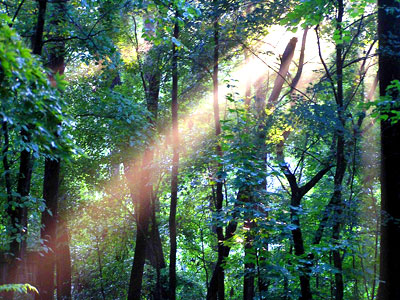
“The FSP is now focusing more on priority areas that provide the greatest benefit to the public, although how to balance serving landowners with high priority forest vs. serving everyone is an issue,” admits Mersmann. States are testing new techniques for outreach to landowners, such as targeted emails, landowner workshops, and landowner associations partnering with organizations.
Partnerships can include the Quality Deer Management Association, which creates deer management plans for large multi-owner acreages, as well as river keeper groups and “hook and bullet” organizations. As landowners become engaged through their interests, it becomes easier to address additional management needs such as Southern pine beetle control or prescribed burning.
An outstanding example of this type of partnership is unfolding right now in central Georgia, a four-county area with a high concentration of landowners who also have hunting leases. Georgia Forestry Commission staff are working with an innovative private forest called Big K Farm, which is serving as an outreach hub to get other landowners involved on a watershed or landscape scale.
This is important, since the most recent “Forests on the Edge Series” report, published by USDA Forest Service, State and Private Forestry, found that this area of central Georgia has more at-risk species than 90% of the country’s private forested watersheds. It is also an area at high risk for increased housing density, increased wildfire, and increased insect pests and disease over the coming decades.
The First Inning Includes a Steep Learning Curve
Lynn Hooven, retired from the Georgia Forestry Commission, now serves as manager of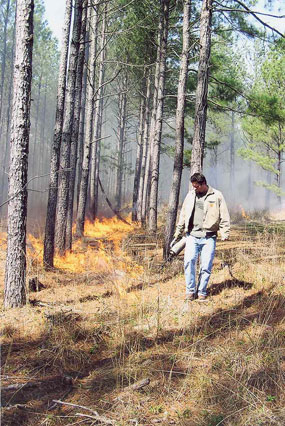 the Big K Farm near Atlanta, Georgia. Lynn likes to joke that “the Big K Farm is ‘mine,’ but I’m lucky enough to have someone else paying the bills!” The someone else in this case happens to be two retired baseball stars: Ryan Klesko and John Smoltz. Klesko - first baseman, outfielder, and a great hitter - played with the Atlanta Braves, San Diego Padres, and San Francisco Giants. Smoltz - a pitcher who’s undoubtedly on his way to the Hall of Fame - pitched more than two decades for the Braves, then the Boston Red Sox and St. Louis Cardinals.
the Big K Farm near Atlanta, Georgia. Lynn likes to joke that “the Big K Farm is ‘mine,’ but I’m lucky enough to have someone else paying the bills!” The someone else in this case happens to be two retired baseball stars: Ryan Klesko and John Smoltz. Klesko - first baseman, outfielder, and a great hitter - played with the Atlanta Braves, San Diego Padres, and San Francisco Giants. Smoltz - a pitcher who’s undoubtedly on his way to the Hall of Fame - pitched more than two decades for the Braves, then the Boston Red Sox and St. Louis Cardinals.
Ryan explains, “I’ve always loved the outdoors and always wanted to have my own piece of property. At first this land just seemed like a good investment, but we soon discovered that learning for ourselves about stewardship was exciting!”
Lynn adds that “Ryan and John’s spirit of openness in allowing large numbers of people to come tour the Big K year-round is key to building a stewardship team in central Georgia. When they first purchased their farm,” he continues, “I got them started in the stewardship program because they had limited knowledge of forestry, stewardship, or tree farms. At first their focus was on cutting timber, but we initiated a Forest Stewardship Plan in 2003 to provide long-term cash flow through carefully managed harvests. By 2015, when the plan will be renewed, we’ll have the highest quality stand of timber ever.”
The Big K Farm Scores a Stewardship Home Run
“It was the Forest Stewardship Program that first got Ryan and John interested in multiple use management in early 2003,” Lynn 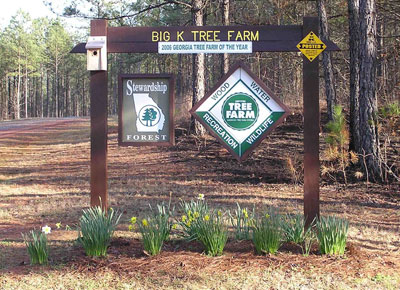 says. By 2006, the Big K was named Georgia State Tree Farm of the Year, and they’ve received multiple awards recognizing their leadership in outdoor education for students, teachers, landowners, and newly-elected legislators. Big K has worked in partnership with various organizations like Macon’s Museum of Arts and Sciences, the Georgia Forestry Commission, and the Georgia Forestry Association to accomplish many of these goals.
says. By 2006, the Big K was named Georgia State Tree Farm of the Year, and they’ve received multiple awards recognizing their leadership in outdoor education for students, teachers, landowners, and newly-elected legislators. Big K has worked in partnership with various organizations like Macon’s Museum of Arts and Sciences, the Georgia Forestry Commission, and the Georgia Forestry Association to accomplish many of these goals.
Lynn’s enthusiasm is contagious. “Our philosophy is one of total stewardship, not just of timber, but also wildlife, recreation, soil, water, aesthetics - you name it. We’ve added a nature trail, ‘Take a Hike,’ that has many tree species identified and an outdoor classroom appropriately named 'The Right Field.' There’s also an old moonshine still and graveyard from the early 1900’s that link the land to past inhabitants.”
Speaking of his bosses, Lynn says, “Ryan and John are enthusiastic stewards and open to trying new ideas. During our on-site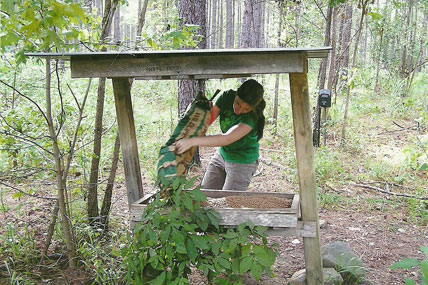 workshops, we focus on any of the 30 or so special demonstration site
workshops, we focus on any of the 30 or so special demonstration site
s set up throughout the farm, depending on the interests of the audience. The sites include streamside management zones, timber stand improvement areas, prescribed burns, wildlife food plots named after various baseball parks, boxes for bluebirds, bats and wood ducks, water control, ‘erosion blankets’ to establish grasses that will stop erosion on slopes, and many other techniques.”
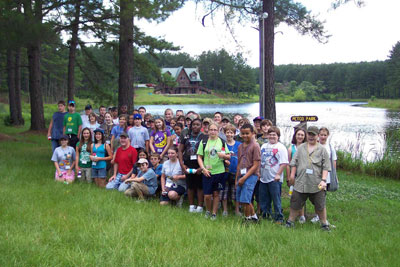 Lynn tries to involve people by appealing to their interests. “You have to have a spark to get a fire going,” he exclaims. When they have teachers visit for a day, they talk about everything. “It’s not all about clear cutting and hunting everything. It’s about leaving the land in better shape than when you bought it, when the time comes to sell it or pass it on to your heirs. We borrow it from future generations. Now Ryan is always talking about how important education is!”
Lynn tries to involve people by appealing to their interests. “You have to have a spark to get a fire going,” he exclaims. When they have teachers visit for a day, they talk about everything. “It’s not all about clear cutting and hunting everything. It’s about leaving the land in better shape than when you bought it, when the time comes to sell it or pass it on to your heirs. We borrow it from future generations. Now Ryan is always talking about how important education is!”
In thinking about the long-term, Ryan tells me, “You know, I’d like to see my son’s son be able to enjoy the same things we do today. There are so many great programs for improving roads, waterways, and replanting trees that people can look into to help their land. If it weren’t for some of these programs, we might not be doing all of of these things at Big K. If we can keep all these programs to supplement landowners for the costs of stewardship, it will help the land for years to come.”
I’m a fan of baseball myself, and I’m in awe of the achievements of both Klesko and Smoltz on the diamond. But I admire them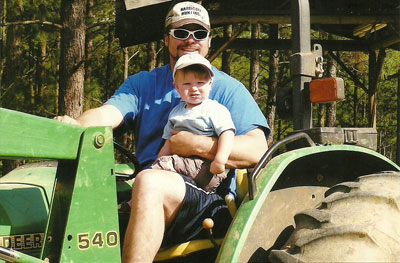 even more for their obvious dedication to the land and what they, with Lynn Hooven’s help, have achieved at the Big K Farm.
even more for their obvious dedication to the land and what they, with Lynn Hooven’s help, have achieved at the Big K Farm.
 Sign In
Sign In
 Sign In
Sign In
